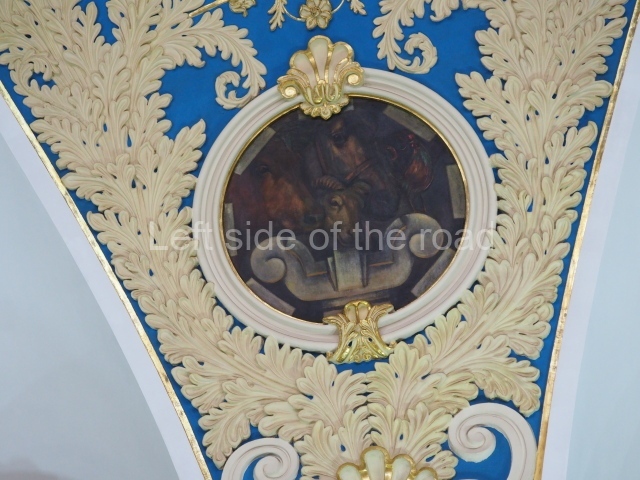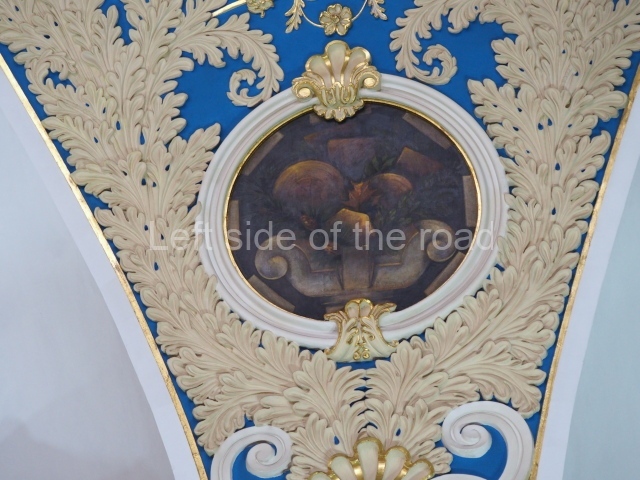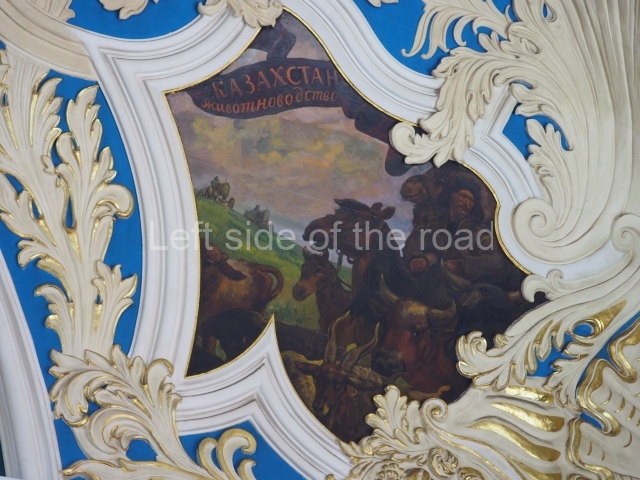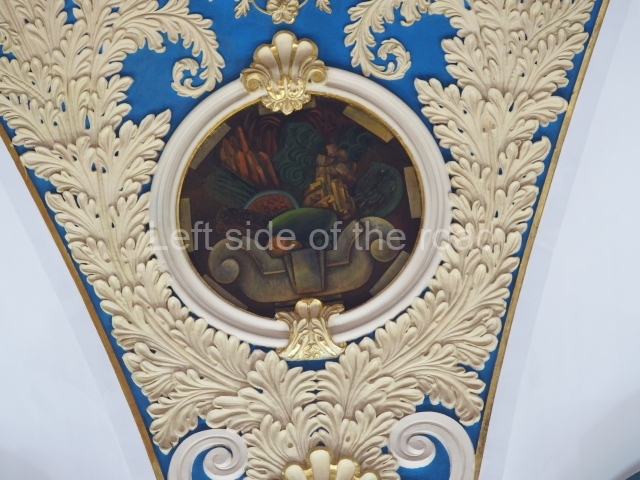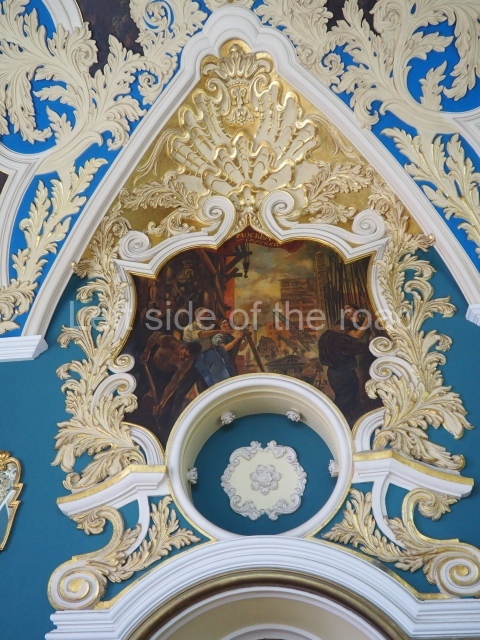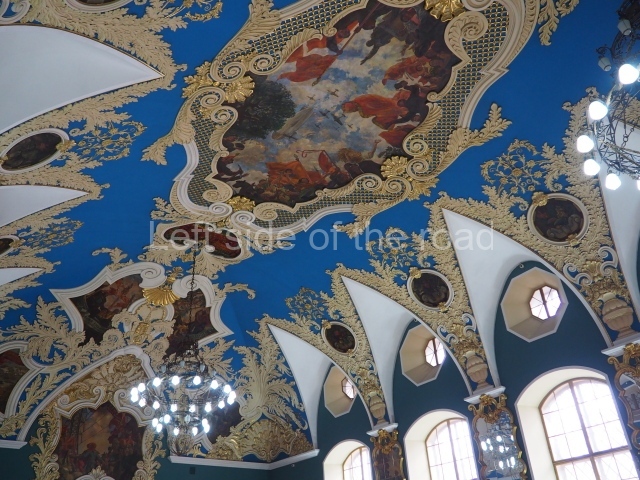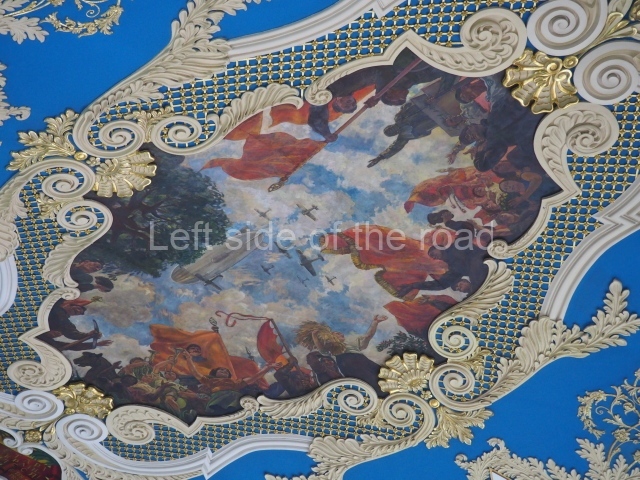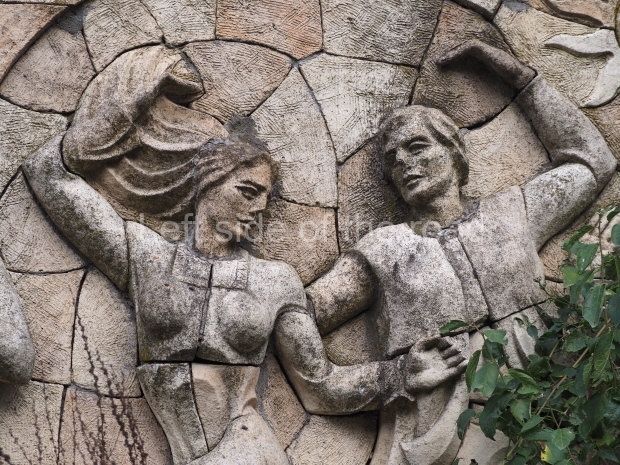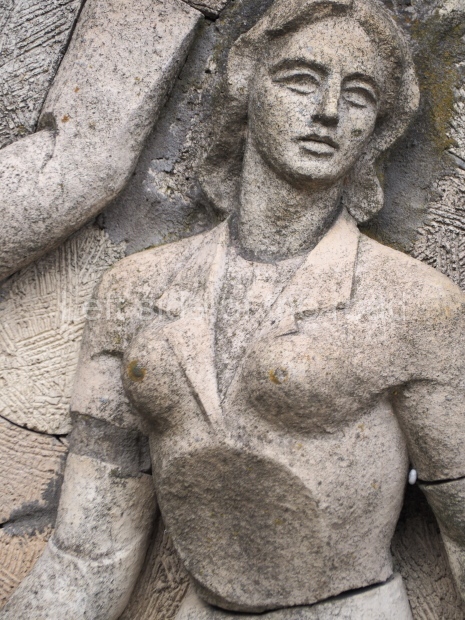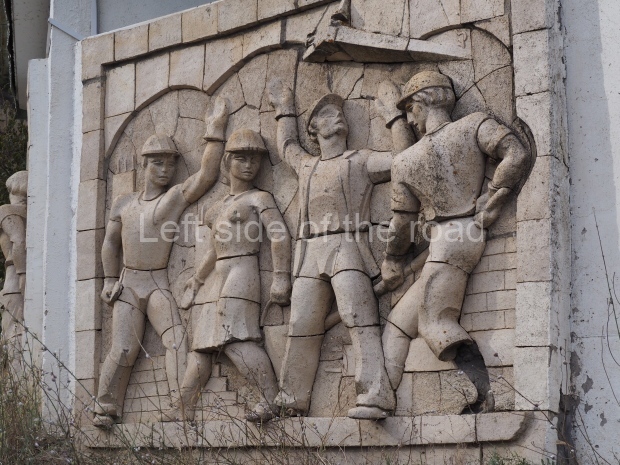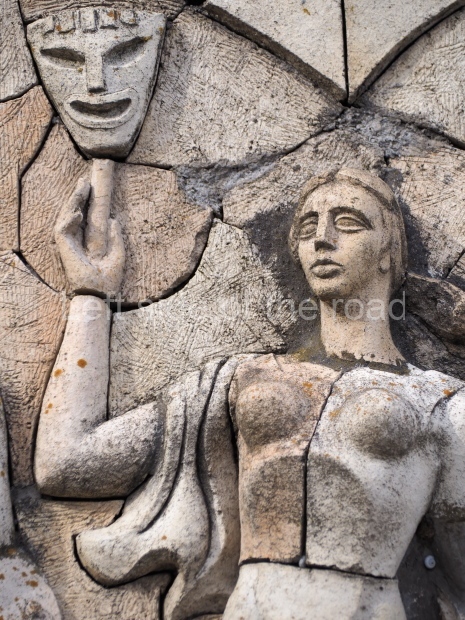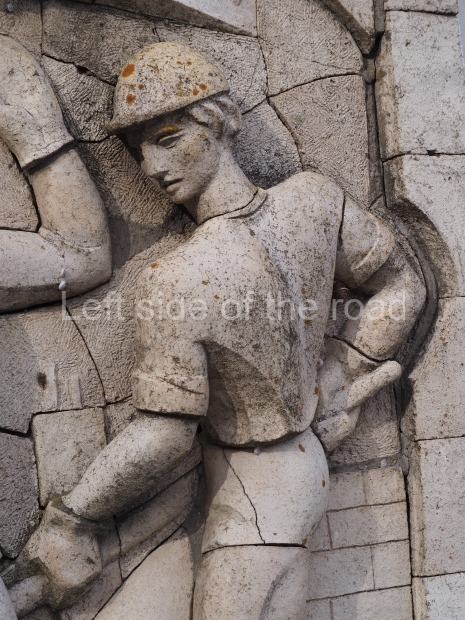
Bodorna mural – linemen
More on the Republic of Georgia
Murals by Bodorna Hydroelectric Plant, Tbilisi, Georgia
Try as I might I have been unable to find out any information whatsoever about these murals. They are certainly from Georgia’s Socialist period but why they are where they are is difficult to tell.
The art work consists of a number of panels (ten of which it is possible to get a good view but a couple which have impenetrable undergrowth preventing a close examination) depicting variolous aspects of life in the Socialist Republic of Georgia.
The wall is at the entrance of a hydroelectric plant and one of the panels depicts workers from such a plant so that would seem to be able to give a rough origin date. However, all the information I’ve been able to find is about the plant that was completed in 2018. So whether this means there existed a much smaller one in the past and it was replaced I don’t know. Considering the other images in the murals the specificity of electrical linemen must be relevant to the location.
My speculation is that there was some sort of community centre, sports ground, that was built next to the reservoir. A some time in the relatively recent past the reservoir has been expanded and whatever was there before has been sacrificed. Now all that remains of that centre is the wall that is now being ‘lost’ to the undergrowth.

Bodorna mural – harvest celebration
No idea of the sculptor, although s/he follows the very distinctive Georgian style as can be seen in the mural on the wall of the old telephone exchange in Tskaltubo; the mural of the War Memorial in Gori and even in the Mother of Georgia statue in the hills above old Tbilisi.
So what’s on the panels? All of the panels which it is possible to see clearly follow a similar format. Apart from one panel all of them have four people involved in various activities and, as far as I could make out, all the individuals are distinct, i.e., there’s no repetition of any figure in another panel. And they generally tell a story of everyday life in (mainly) rural Georgia between the Great Patriotic War and the collapse of the Soviet Union at the beginning of the 1990s.
As seems to be a distinctive Georgian style of the period the tableau is made of of blocks of stone which, I think, gives the figures a ‘puppet’ look. In general they seem to be in a good condition – considering that no one, I’m sure, takes any real care of the art work. However, there are a few circumstances where a block is missing, mainly of a few of the faces. Whether general wear and tear or a conscious political ‘statement’ it’s impossible to tell. There’s a little bit of mindless vandalism but considering the isolation of the site surprisingly little.

Bodorna mural – female construction worker
The panels;
- four male electrical linemen, working to distribute the power generated from the hydroelectric plant to the surrounding communities. There’s an image of a dam releasing its water in the background;
- a group representing the arts, painting, music, theatre and performance. Here there are two men and two women;
- an image of construction workers. A metal beam is being lowered above them. The four are all wearing hard hats and one of them is a woman;
- a family group consisting of the parents on either side of a toddler, holding and supporting him. Unfortunately the baby has lost its head. Behind that group there are two older children playing a ball game. Interestingly, in the top left hand corner of the panel is an image of an old man holding a model of a house, there’s also a plant growing in the bottom tight hand corner. This is depicted as being something on the wall of their home and, I’m assuming, he represents one of the ancient, mythological deities from Caucasian folklore, one of those who protects the home – although I haven’t been able to identify exactly which guardian angel;

Bodorna mural – protector of the home
- a group representing science, physics and chemistry. Here there are three men and a woman. There’s a globe on the ground, scientific symbols in the background and on the left is a man in a space suit (one Georgian cosmonaut went into space as part of the Soviet space programme);
- a group of agricultural workers bring in the grape harvest. It should be remembered that wine is supposed to have been invented in Georgia. In the left background there’s a huge, flaming sun. Two of the faces of the figures are missing;
- a group of four shepherds – with two of their sheep;
- four agricultural workers, two men and two women, who seem to be celebrating the harvest. The man and the woman on the left both hold scythes. A man is playing a stringed instrument that could be either a chonguri or a panduri (a four and three stringed long-neck lute) and the woman on the right is holding a bunch of flowers above her head. Doves fly around in the background;
- a group of male and female dancers, partially obscured by the encroaching vegetation;
- a group of four male footballers.
Not sure how many other panels there might be as access was impossible due to the shrubbery, but only a couple, I think.
An interesting little sculpture gallery – and basically in the middle of nowhere.
Related;
The Great Patriotic War Museum and War Memorial – Gori
Mother of Georgia – Kartlis Deda – Tbilisi
Telephone exchange mural – Tskaltubo
Location;
Off the eastern side of the ‘military road’ that runs from Tbilisi towards the Russian border near Kazbegi, close to the village of Bodorna and at the entrance to the Bodorna Hydroelectric Plant.
GPS;
42.041950º N
44.745477º E
More on the Republic of Georgia









